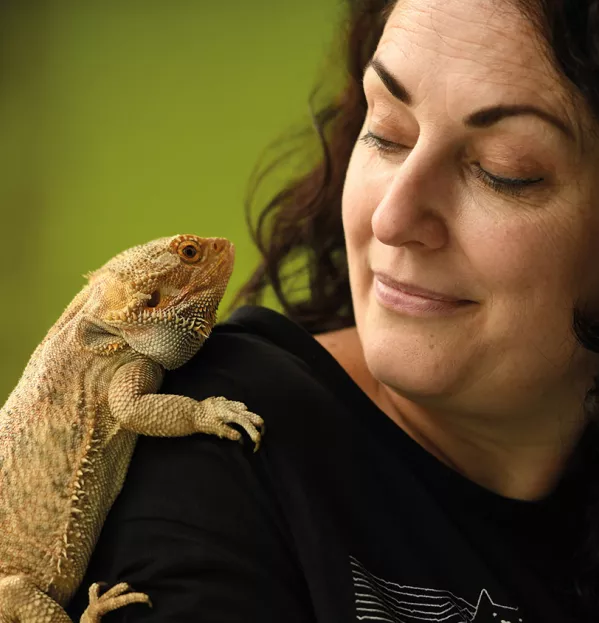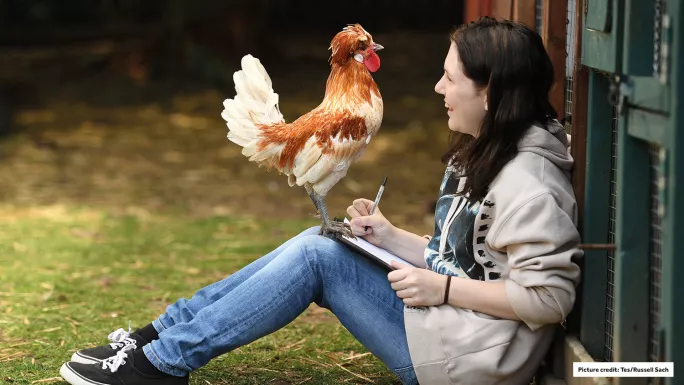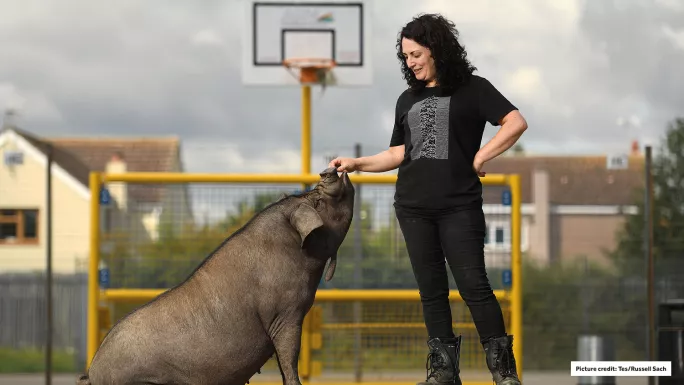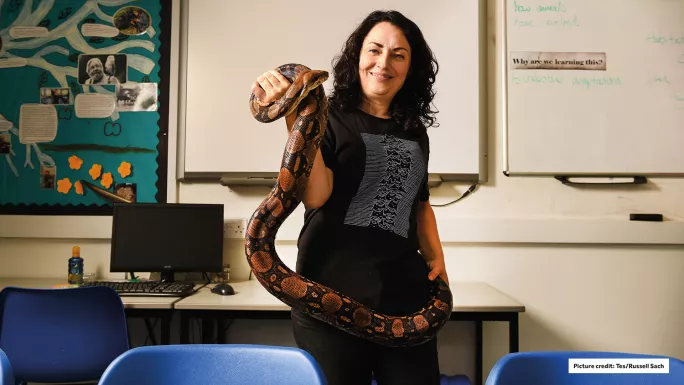How urban schools are going wild for farming

The headteacher at Hartshill School was not sure what to do with the square of grass in front of his office.
“He said, ‘Kids keep playing football there, and it’s really annoying me. Do you want the land?’” says Hayley Simpkin, former science teacher at the Warwickshire secondary. “So I put a couple of pigs there.”
Hartshill, like most schools, does not have a vast amount of land. However, by the time Simpkin had left, it had chickens, pigs, rabbits, reptiles, and facilities for pupils to grow their own fruit and vegetables.
Traditionally, school farms tend to be run out of rural schools, where the rolling playing fields can merge seamlessly with paddocks and grassland. But, according to Ian Eggington-Metters, coordinator of the Schools Farm Network, this does not need to be the case.

“It’s feasible for all schools to have access to farming livestock,” Eggington-Metters says. “If you’re a small school, you might just have a few poultry moving around the school site.
“Even if you don’t have any land in the school, you can grow food: tomatoes in hanging baskets, plants growing in tyres in the playground, beehives on the roof. There’s a whole range of options out there.”
Keeley Thomas (main picture, and below), who manages the farm at Cardinal Wiseman School, in Coventry, has become an expert at making things work in unlikely locations. Hers is a typical urban secondary: there are playing fields, but no other green space. Yet she has kept chickens, pigs, goats, ducks, geese, reptiles and smaller animals, as well as two donkeys, adopted from a local sanctuary.
The animal house is a converted mechanics classroom. The old bikeshed has been turned into a walled garden. Snakes and lizards, meanwhile, are kept in Thomas’s classroom.
“Quite a few classrooms have chickens sitting on the windowsill, looking in,” Thomas says. “Our pigs are obedience-trained: they can sit on command, and just about walk to heel.
“Every kid in school has access to the animals. You can tell the children who are more involved: if a chicken escapes, they’ll just pick it up, tuck it under their arm and take it back. The other kids are all, ‘Oh! A chicken’s escaped.’”
At Hartshill, too, Simpkin found ways to maximise minimal space. The school had a shed that was used to store exam tables out of season. Simpkin refitted this for reptiles and what she refers to as “fluffy stuff”, such as guinea pigs. She bought a couple of small polytunnels and used them to grow fruit and vegetables from seed.
Most animals are relatively cheap: even lambs can be bought for as little as £10. The greatest concern is finding someone who will take responsibility for feeding and cleaning duties. “The head said, ‘We need somebody to do this. What do you reckon?’” Simpkin says. “I said, ‘I have a horse, so I’ll do it.’”
Schools as sausage factories
During term-time, pupils tend to muck in with the mucking out. Many school farms share weekend and holiday feeding duties between support staff, site staff, parents, pupils and - when the budget will allow it - farm technicians.
Schools that do not have the staff to manage a farm during the holidays can still keep animals. “There are farmers loaning animals to schools: poultry, sheep, sometimes pigs and calves as well,” says Eggington-Metters. “The farmer supplies the animal and the feed, and then takes it back during the school holidays. It isn’t always necessary for schools to take 100 per cent responsibility.”
There are other reasons for livestock husbandry to be seasonal, too. “We’d get the pigs in March,” Simpkin says. “And they’d go for sausages in October.

“I’d tell the pupils the pigs would be going in the next couple of weeks, so they could go and say goodbye. Then the meat came back, and they were, ‘Oh, that’s come out well.’
“We’d always get a bit of mince from them, so we could make sausages and burgers. The pupils were horrified to start with. That lasted about five minutes. They said, ‘Those pigs had a really nice life,’ and then they never looked back.”
Even on a smaller scale, pet-to-plate lessons are possible. At Brockhill Park Performing Arts College in Kent, assistant principal Donna Ashlee runs an omelette-making topic for Year 7 pupils.
“The amount of kids who haven’t ever cracked an egg or made an omelette - it’s mindblowing, really,” Ashlee says. “Kids who’ve said, ‘Miss, is it like making a microwave omelette?’”
Pupils begin by collecting eggs from school’s resident hens. Because Brockhill Park does not have a food-tech kitchen, they then cook their omelettes on portable hobs, bought at Argos and assembled in the playground.

Simpkin points out that two farming-related qualifications - a BTec in animal care and a City and Guilds technical award in land-based studies - count towards a school’s Progress 8 score.
“It’s not just playing with guinea pigs,” she says. “It’s a little more expensive than running the geography department, but you get therapeutic use out of it as well.”
For many schools, this therapeutic use is the real motivation for setting up coops, hutches and pens on-site for students to access.
“It certainly helps with anger issues,” Ashlee says. “Animals are incredibly forgiving. Time spent - it could just be grooming the rabbits - is very therapeutic for young people.”
Thomas agrees. “Students use the farm as somewhere quite to come - stroke the rabbits, feed the donkeys - to get away from the busyness of the school. To take some time away from school life.” She pauses. “Teachers do that as well.”
You need a Tes subscription to read this article
Subscribe now to read this article and get other subscriber-only content:
- Unlimited access to all Tes magazine content
- Exclusive subscriber-only stories
- Award-winning email newsletters
Already a subscriber? Log in
You need a subscription to read this article
Subscribe now to read this article and get other subscriber-only content, including:
- Unlimited access to all Tes magazine content
- Exclusive subscriber-only stories
- Award-winning email newsletters